Ditapis dengan
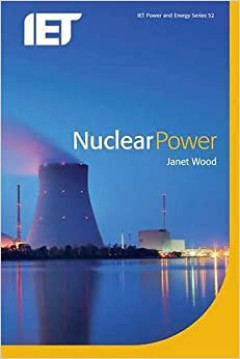
Nuclear Power
This title is the first of four 'new-look' books in the Power and Energy series that are aimed at industry professionals rather than academics. Nuclear Power explains in detail how nuclear power works, its costs, its benefits as part of the electricity supply system, and also examines its record. This book covers the debate over the pros and cons of nuclear power. Is it expensive, dangerous …
- Edisi
- -
- ISBN/ISSN
- 0863416683
- Deskripsi Fisik
- xxviii, 524 p. : Illus. ; 21 cm
- Judul Seri
- IET Power and Energy Series 52
- No. Panggil
- 621.483 WOO n
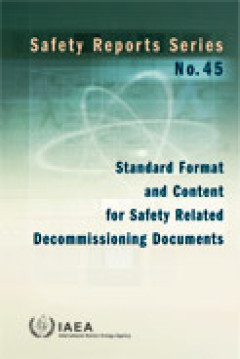
Standard Format and Content for Safety Related Decommissioning Documents
This report provides information on the content and format for decommissioning plans and supporting safety related documents. Its scope includes information that is relevant to all types of nuclear facilities, ranging from nuclear power plants and reprocessing facilities to university laboratories and manufacturing plants. The report will be of interest to decommissioning planning engineers, pr…
- Edisi
- -
- ISBN/ISSN
- 9201132042 / 10206450
- Deskripsi Fisik
- 64 p. : Illus. ; 24 cm
- Judul Seri
- Safety Reports Series No. 45
- No. Panggil
- 621.483 IAE S
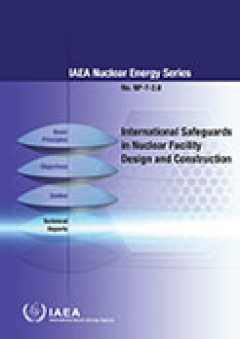
International Safeguards in Nuclear Facility Design and Construction: IAEA Nu…
This IAEA publication provides guidance on the inclusion of safeguards considerations in nuclear facility design and construction. This first volume introduces the basic principles of safeguards by design and discusses the goals, costs and rewards, and places the information into the context of nuclear facility design and construction. Benefits and opportunities for all stakeholders are emphasi…
- Edisi
- -
- ISBN/ISSN
- 978-92-0-140610-1
- Deskripsi Fisik
- 22 p.; 30 cm.
- Judul Seri
- IAEA Nuclear Energy Series
- No. Panggil
- 621.483 IAE i (2)

Procedures for Conducting Probabilistic Safety Assessments of Nuclear Power P…
This safety practice report provides guidance on conducting a Level 1 PSA for internal events in nuclear power plants. The main emphasis is on the procedural steps of the PSA rather than the details of the corresponding methods. The report is intended to assist technical persons managing or performing PSAs. A particular aim is to promote a standardized framework, terminology and form of documen…
- Edisi
- -
- ISBN/ISSN
- 9201023928 / 00741892
- Deskripsi Fisik
- 175 p. : Illus. ; 24 cm
- Judul Seri
- Safety Series No. 50-P-4
- No. Panggil
- 621.48 IAE p
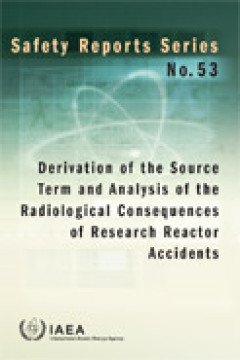
Derivation of the Source Term and Analysis of the Radiological Consequences o…
This report provides a set of suggested methods and practices for determining the source term and analysing the radiological consequences of research reactor accidents. It provides safety analysts, regulators, and reactor facility management and operations staff, with the calculation methods and techniques necessary for deriving the source term. This includes all factors relevant to the formati…
- Edisi
- 53
- ISBN/ISSN
- 978–92–0–109707–1 / 1020–6450 ; no. 53
- Deskripsi Fisik
- 193 p; 2.84MB
- Judul Seri
- -
- No. Panggil
- 616.9897 IAE D
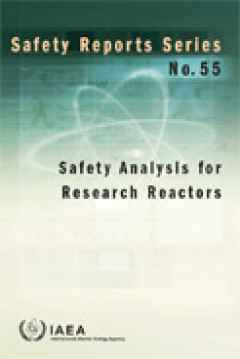
Safety Analysis for Research Reactors | Safety Reports Series No. 55
This publication provides practical guidance for performing safety analyses of research reactors. The guidance is based on present good practice worldwide. It covers all the steps required to perform safety analyses, i.e. selection of initiating events and acceptance criteria, rules and conventions, selection of computational tools, and presentation and evaluation of the analysis results. The s…
- Edisi
- -
- ISBN/ISSN
- 978-92-0-101008-7
- Deskripsi Fisik
- 81 p;1.41 MB
- Judul Seri
- -
- No. Panggil
- 621.483 IAE S
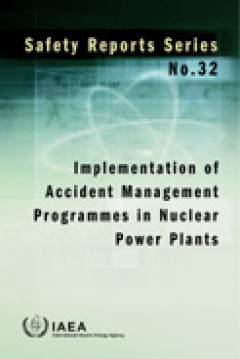
Implementation of Accident Management Programmes in Nuclear Power Plants | Sa…
This publication provides a description of the elements which should be addressed by the team responsible for the preparation, development and implementation of a plant specific accident management programme at a nuclear power plant. The issues addressed include formation of the team, selection of accident management strategies, safety analyses required, evaluation of the performance of plant s…
- Edisi
- 32
- ISBN/ISSN
- 92-0-113803-2
- Deskripsi Fisik
- 121p ; 582kb
- Judul Seri
- -
- No. Panggil
- 621.483 IAE I
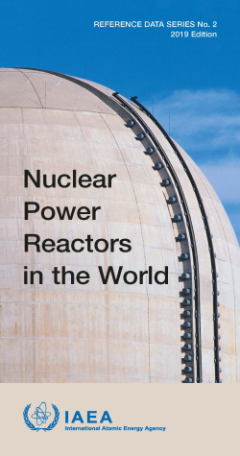
Nuclear Power Reactors in the World Edition 2019 - Reference Data Series No. 2
This is a collection of references about nuclear power reactors in the world 2019. Published by the IAEA in 2019. This document contains a lot of statistical data in the form of tables such as from construction to operation from various IAEA member countries. Final data is taken until 2018 (MM). Keyword: nuclear power reactor, IAEA, nuclear reactor
- Edisi
- -
- ISBN/ISSN
- 978-92-0-102719-1
- Deskripsi Fisik
- 80 Halaman
- Judul Seri
- -
- No. Panggil
- 621.483 IAE N
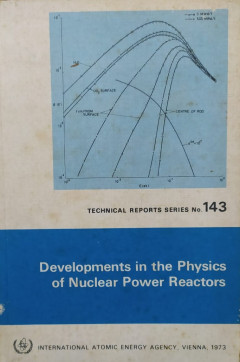
Developments in the Physics of Nuclear Power Reactors: Technical Reports Seri…
The reactor physicst must resist the tendency to become so immersed in day-to-day problems as to lose sight of the overall role of reactor physics. It is his responsibility to form an independent opinion of the overall requirements of a project with respect to reactor physics and to try to make sure they are met. The rest of this presentation gives a general picture of the areas in which rea…
- Edisi
- -
- ISBN/ISSN
- -
- Deskripsi Fisik
- 291 p., illus.; 24 cm.
- Judul Seri
- Technical Reports Series No. 143
- No. Panggil
- 621.483 IAE d
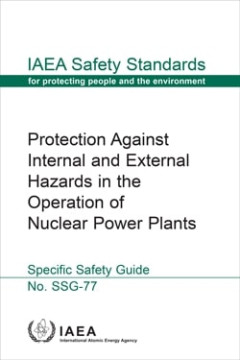
Protection Against Internal and External Hazards in the Operation of Nuclear …
This Safety Guide provides specific recommendations on protection against internal and external hazards in the operation of nuclear power plants. It provides new or updated recommendations derived from enhanced understanding of operational aspects of hazards and combinations of hazards. Operating experience gained from incidents and accidents in nuclear power plants around the world has demonst…
- Edisi
- -
- ISBN/ISSN
- 978–92–0–101522–8 (pdf)
- Deskripsi Fisik
- 83 p
- Judul Seri
- IAEA safety standards series
- No. Panggil
- 621.039.58 IAE p
 Karya Umum
Karya Umum  Filsafat
Filsafat  Agama
Agama  Ilmu-ilmu Sosial
Ilmu-ilmu Sosial  Bahasa
Bahasa  Ilmu-ilmu Murni
Ilmu-ilmu Murni  Ilmu-ilmu Terapan
Ilmu-ilmu Terapan  Kesenian, Hiburan, dan Olahraga
Kesenian, Hiburan, dan Olahraga  Kesusastraan
Kesusastraan  Geografi dan Sejarah
Geografi dan Sejarah